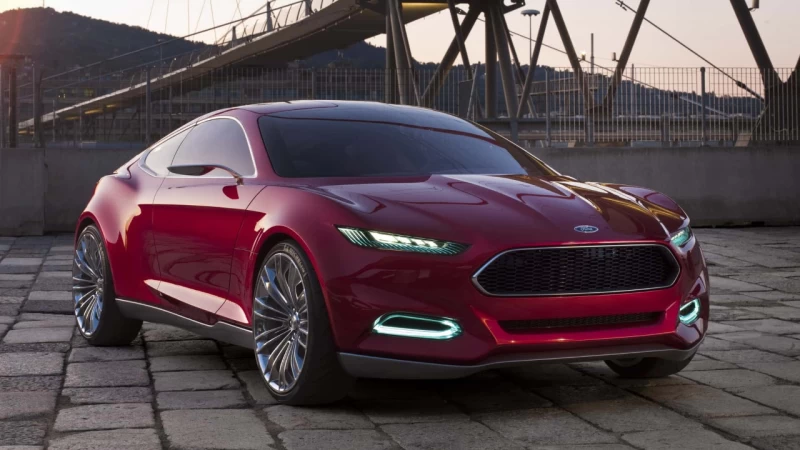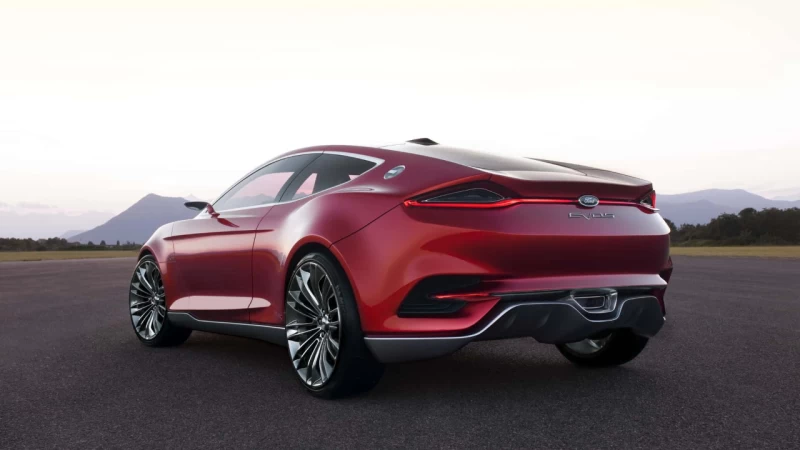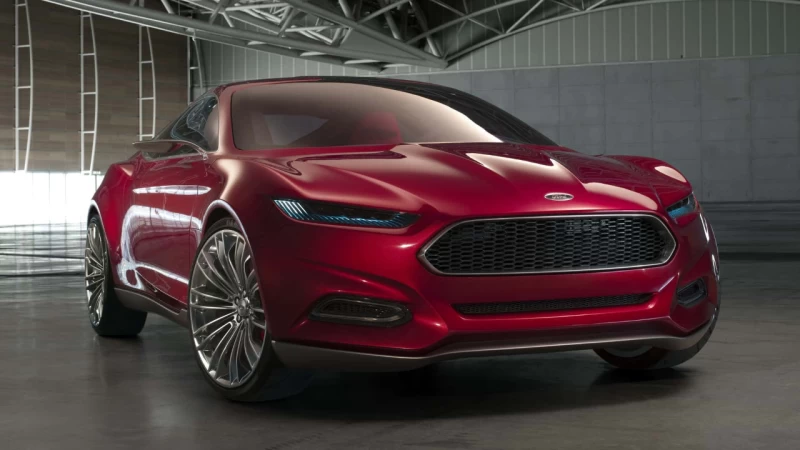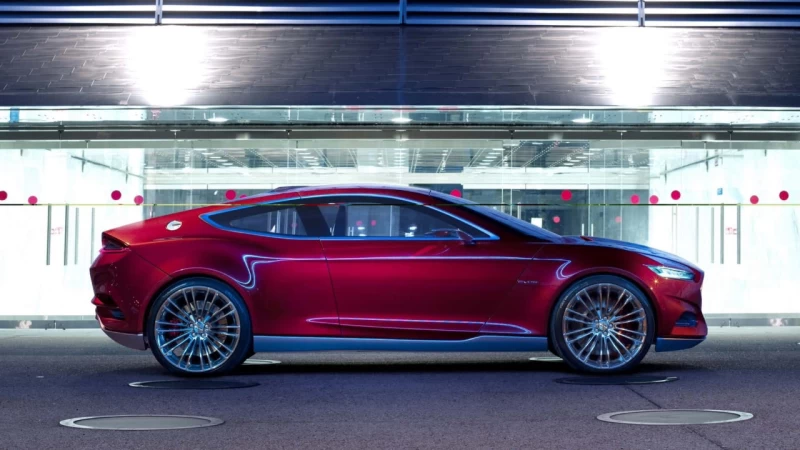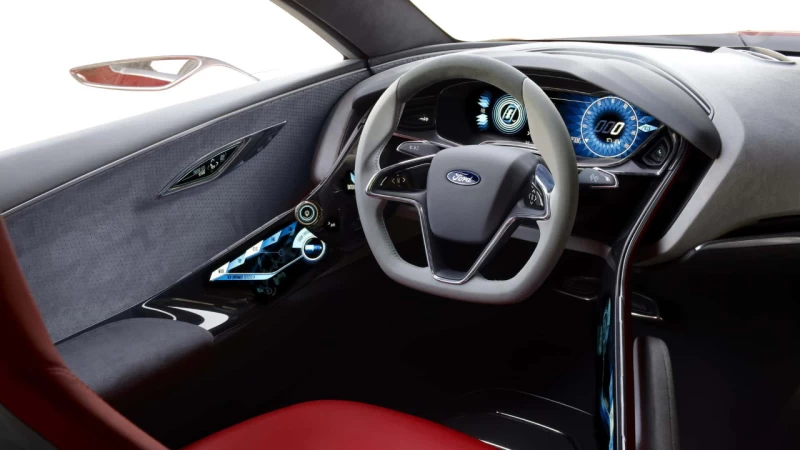The Ford Evos Concept Inspired An Entire Generation Of Cars
October 18, 2024 225 Ford
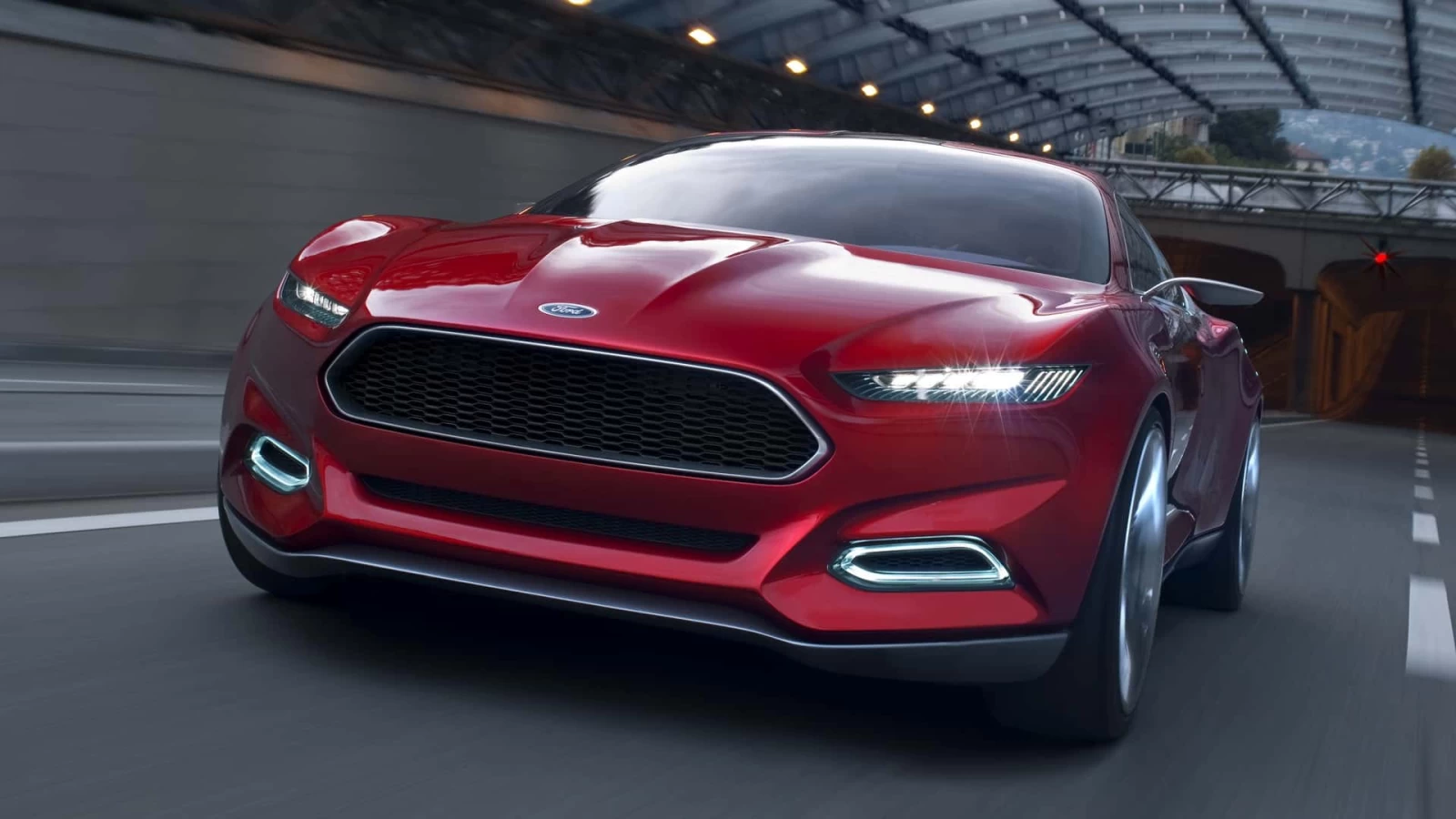
The Evos was designed by Stefan Lamm, Martin Smith, and Eugen Enns as Ford shifted away from its "Kinetic” design language introduced in 2005 with the Iosis concept. The hallmark styling cues were its trapezoidal grille, sleek headlights, and triangular taillights. The new face and rear would proliferate throughout Ford's lineup, ending up on the 2013 Fusion, the 2015 Edge, the 2015 Mustang, and the 2015 Focus refresh.
"Designing the face of a brand doesn’t happen overnight," Eugen Enns said in an interview with The Art Career Project. "Typically good ideas just come straight to you at unexpected times, and it is your job to take the next step to develop them further."
While the look of the Evos percolated throughout Fords lineup in the mid-2010s, some of the concept's technological innovations also become reality. The Evos imagined our modern connected world with offerings like "a new generation of driver interaction and awareness," according to the original press release.
Ford said the Evos could access information from the cloud, providing "the same connected lifestyle the driver experiences at home or office," the car automatically heating or cooling the cabin based on the weather. Ford also imagined that the car would communicate with in-home devices, turning off lights and closing the garage door as it pulled away.
As far as performance, Ford said the Evos could adapt its handling, steering, and engine parameters to the driver's tastes. It would even be able to learn the driver habits – adding another layer of personalization.
The company never gave specifics on the powertrain, but it did mention that the Evos had a hybrid setup similar to the C-Max Energi that launched in North America in 2012. The Energi arrived on our shores with a 2.0-liter Atkinson-cycle four-cylinder with a permanent-magnet AC-synchronous electric motor. It made just 188 horsepower, which seems a bit anemic for something as sleek as the Evos, but the concept was more about design than performance.
The Evos did have an EV drive mode and an estimated 500-mile driving range when combined with the gas engine. But Ford said you would only be able to use battery power at speeds of up to 47 miles per hour before the gas engine kicked in.
Ford has since shifted away from the Evos-influenced look. The outgoing Edge still maintains some elements of that original concept's design language, while the latest Mustang is the most recent model to move away from the Evos concept’s looks to more aggressive styling.
After it debuted at the Frankfurt Motor Show, Ford brought the Evos concept to America for the CES show in Las Vegas in 2012 before retiring it to an unknown location. We asked Ford about its whereabouts and are hoping to hear where the concept ended up after its world tour.
Although Ford never technically put the Evos concept into production, opting to let it influence its product lineup, the company eventually use the same name on a sleek-looking mid-size crossover for China. The production Evos launched in 2021, looking somewhat similar to the 2011 concept with some of the same styling cues, including the fastback shape, the sleek headlights, and the trapezoidal grille.
"Designing the face of a brand doesn’t happen overnight," Eugen Enns said in an interview with The Art Career Project. "Typically good ideas just come straight to you at unexpected times, and it is your job to take the next step to develop them further."
While the look of the Evos percolated throughout Fords lineup in the mid-2010s, some of the concept's technological innovations also become reality. The Evos imagined our modern connected world with offerings like "a new generation of driver interaction and awareness," according to the original press release.
Ford said the Evos could access information from the cloud, providing "the same connected lifestyle the driver experiences at home or office," the car automatically heating or cooling the cabin based on the weather. Ford also imagined that the car would communicate with in-home devices, turning off lights and closing the garage door as it pulled away.
As far as performance, Ford said the Evos could adapt its handling, steering, and engine parameters to the driver's tastes. It would even be able to learn the driver habits – adding another layer of personalization.
The company never gave specifics on the powertrain, but it did mention that the Evos had a hybrid setup similar to the C-Max Energi that launched in North America in 2012. The Energi arrived on our shores with a 2.0-liter Atkinson-cycle four-cylinder with a permanent-magnet AC-synchronous electric motor. It made just 188 horsepower, which seems a bit anemic for something as sleek as the Evos, but the concept was more about design than performance.
The Evos did have an EV drive mode and an estimated 500-mile driving range when combined with the gas engine. But Ford said you would only be able to use battery power at speeds of up to 47 miles per hour before the gas engine kicked in.
Ford has since shifted away from the Evos-influenced look. The outgoing Edge still maintains some elements of that original concept's design language, while the latest Mustang is the most recent model to move away from the Evos concept’s looks to more aggressive styling.
After it debuted at the Frankfurt Motor Show, Ford brought the Evos concept to America for the CES show in Las Vegas in 2012 before retiring it to an unknown location. We asked Ford about its whereabouts and are hoping to hear where the concept ended up after its world tour.
Although Ford never technically put the Evos concept into production, opting to let it influence its product lineup, the company eventually use the same name on a sleek-looking mid-size crossover for China. The production Evos launched in 2021, looking somewhat similar to the 2011 concept with some of the same styling cues, including the fastback shape, the sleek headlights, and the trapezoidal grille.
News gallery
Related News

Ford F-150 Lightning, Mustang Mach-E Get Free Home Charger And Installation
Ford knows that it has a long road ahead for getting more of its customers to go electric. Despite being the no. 2 best-selling single electric vehicle brand behind Tesla, Ford discovered in a recent survey of more than 2,000 prospective buyers that it's still dealing with many barriers, myths and misconceptions that are keeping many people ... Read more
Tags: Ford